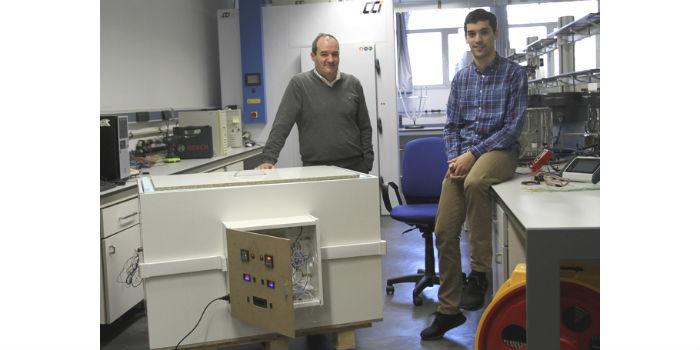 Spain. The Energy Research in Building group of the University of the Basque Country has developed a prototype of equipment capable of monitoring more environmental variables and sending information to the user, or even to another machine to act accordingly.
Spain. The Energy Research in Building group of the University of the Basque Country has developed a prototype of equipment capable of monitoring more environmental variables and sending information to the user, or even to another machine to act accordingly.
The international journal Automation in Construction has just published the article 'Environmental monitoring system based on an Open Source Platform and the Internet of Things for a building energy retrofit', which includes the research carried out by the Energy in Building (ENEDI) research group of the Universidad del País Vaso/Euskal Herriko Unibertsitatea on the use of tools based on Open Source platforms and the Internet of Things, two transdisciplinary research areas that they implemented in the building sector.
The ENEDI group, in collaboration with l'University Paris Nanterre, has carried out research related to the monitoring of buildings, developing a measurement equipment and implementing it in the San Roke 32 case study in Donostia. This building is a benchmark in the sector of buildings with almost zero energy consumption (nZEB), since it has been energetically rehabilitated under the Passivhaus standard and belongs to one of the case studies of the European EuroPHit program.
The research focused on the monitoring of environmental variables in buildings using a certain type of sensors. Specifically, a prototype of monitoring equipment was made and implemented in the building of San Roke 32. In addition, it was found that this solution can be applicable for various purposes with other types of sensors (lighting, electricity consumption, water consumption ...) or actuators (relays, heaters, solenoid valves, motors ...), thus opening the field of application in the building sector and many others.
One of the objectives proposed in the research was to overcome the existing barriers in the field of building monitoring: lack of flexibility for specific measurement needs, interoperability between the equipment and the high acquisition costs of the same. To do this, "we rely on two of the last two most outstanding technologies in the Smart field, Open Source Platforms (OSP) and the Internet of Things (IoT)," explains Alexander Martín-Garín, lead author of the article and predoctoral researcher. The first of these allowed us to develop a monitoring equipment according to the particular needs of the project thanks to the freedom of development that these platforms allow. And the second, it allowed us to manage the information we were collecting in real time." This last aspect is the one that allows to optimize the operation of different processes and give information to the user to act for himself or to take a step further, through the use of the "intelligence" of the equipment so that they act on their own thanks to what is known as the "machine to machine" communication ( M2M). That is, as an example, if the temperature of the house is below 19ºC, the sensor is programmed to send an order to the heating system and thus increase the temperature of the house to the indicated setpoint.
In turn, it was possible to show that the interaction between the user and the house is essential to achieve a good Indoor Air Quality (CAI). "Through the window opening sensor that was installed, it was verified how only 10 minutes of opening was able to reach a good level of CO2, which is one of the most used indicators in this type of study," says the researcher. People or combustion systems, such as stoves, become the most important emission foci and, if the recommended level of 1000 ppm is exceeded, users may begin to experience discomfort inside the house (headache, tiredness, lack of concentration ...).
Due to the importance of this parameter, the current building regulations relating to the CAI, the Technical Building Code HS-3, have been recently updated to meet the requirements of low energy consumption that are required today in buildings. In general, the renewal of indoor air has been carried out by constant flow, thus generating an excess of ventilation and, as a consequence, producing a greater energy consumption. That is why, to reduce this consumption, currently the regulations allow ventilation on demand by measuring the level of CO2 in the house to ventilate what is strictly necessary.
Source: University of the Basque Country.














